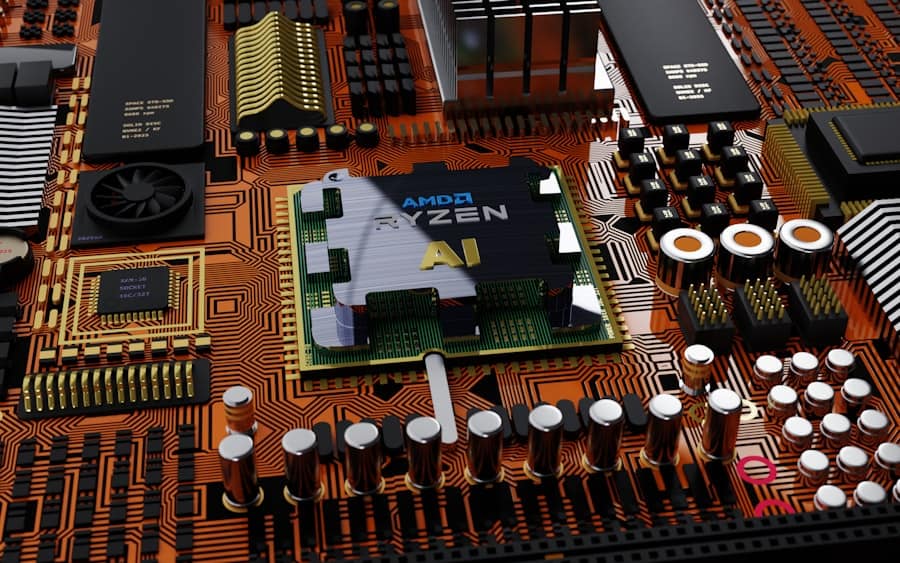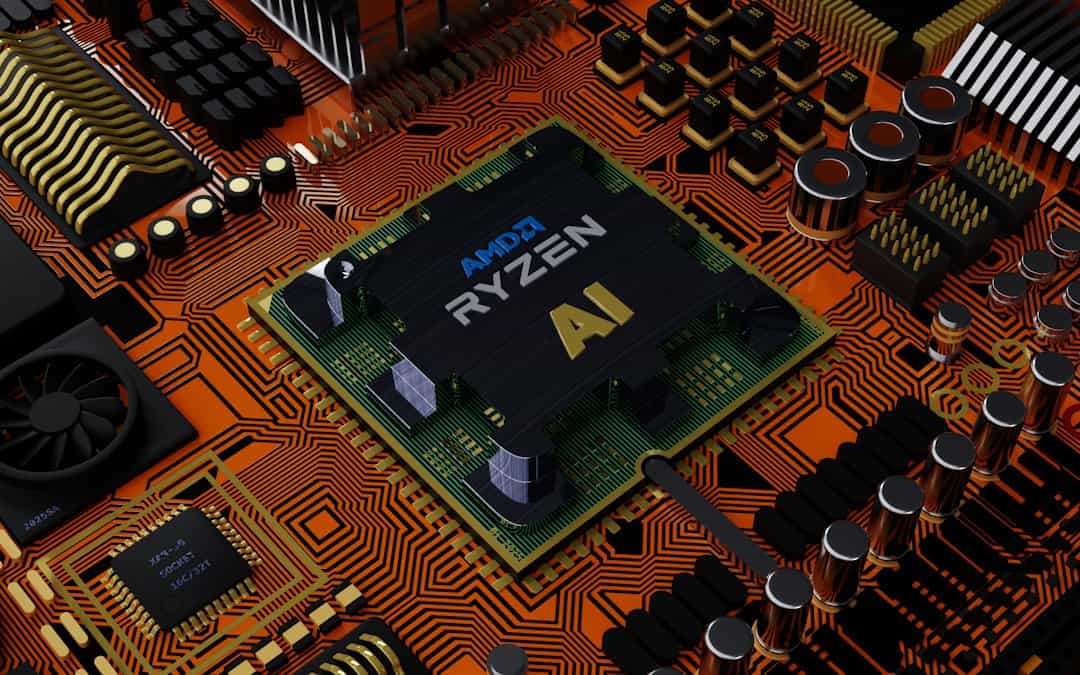Neural networks are a key component of artificial intelligence and machine learning. These algorithms, inspired by the structure of the human brain, are designed to identify patterns in data. They process and interpret various types of input, such as images, sound, text, or time series, by converting them into numerical vectors.
Neural networks excel at tasks like clustering and classification, and can model complex relationships between inputs and outputs. Deep learning is a specialized branch of machine learning that utilizes artificial neural networks with multiple layers to analyze large datasets. These deep neural networks process information through successive layers, each extracting increasingly abstract features from the raw input.
For instance, in image recognition, initial layers might detect basic elements like edges, while deeper layers identify more complex concepts such as faces or objects. The term “deep” refers to the numerous hidden layers in these networks, which can far exceed the two or three layers found in traditional neural networks. Deep Learning has been instrumental in driving significant advancements in artificial intelligence in recent years.
Key Takeaways
- Neural networks and deep learning are a subset of artificial intelligence that mimic the way the human brain processes information.
- Artificial intelligence plays a crucial role in enhancing the capabilities of neural networks and deep learning by enabling them to learn from data, recognize patterns, and make decisions.
- Training and optimizing neural networks for deep learning involves adjusting parameters and algorithms to improve accuracy and efficiency in processing data.
- Neural networks and deep learning have diverse applications in AI, including image and speech recognition, natural language processing, and autonomous vehicles.
- Challenges in neural networks and deep learning include data privacy, bias in algorithms, and the need for continuous learning to keep up with evolving technology.
The Role of Artificial Intelligence in Neural Networks and Deep Learning
Artificial intelligence (AI) plays a crucial role in the development and application of neural networks and deep learning. AI is the simulation of human intelligence processes by machines, especially computer systems. These processes include learning (the acquisition of information and rules for using the information), reasoning (using rules to reach approximate or definite conclusions), and self-correction.
Particular applications of AI include expert systems, speech recognition and machine vision. In the context of neural networks and deep learning, AI enables machines to learn from experience, adjust to new inputs and perform human-like tasks. This is achieved through the use of algorithms that allow computer systems to process large amounts of data and recognize patterns within it.
AI also enables machines to make decisions based on this data, leading to more accurate predictions and outcomes. As technology continues to advance, AI will play an increasingly important role in the development and application of neural networks and deep learning.
Training and Optimizing Neural Networks for Deep Learning

Training and optimizing neural networks for deep learning is a complex process that involves several key steps. The first step is to gather and preprocess the data that will be used to train the network. This may involve cleaning the data, normalizing it, and splitting it into training and testing sets.
Once the data is prepared, the next step is to design the architecture of the neural network. This involves determining the number of layers, the number of neurons in each layer, and the activation functions that will be used. After the architecture is defined, the network must be trained using an algorithm such as backpropagation, which adjusts the weights of the connections between neurons to minimize the difference between the predicted output and the actual output.
This process is repeated many times until the network achieves a satisfactory level of accuracy. Finally, the network must be optimized to improve its performance. This may involve fine-tuning the hyperparameters, such as the learning rate and batch size, or using techniques such as dropout or batch normalization to prevent overfitting.
Overall, training and optimizing neural networks for deep learning requires a combination of technical expertise, computational resources, and trial-and-error experimentation.
Applications of Neural Networks and Deep Learning in AI
| Application | Description |
|---|---|
| Image Recognition | Using neural networks to identify and classify objects within images. |
| Natural Language Processing | Utilizing deep learning to understand and process human language. |
| Speech Recognition | Applying neural networks to convert spoken language into text. |
| Recommendation Systems | Using deep learning to provide personalized recommendations to users. |
| Autonomous Vehicles | Implementing neural networks for self-driving car technology. |
Neural networks and deep learning have a wide range of applications in artificial intelligence. One common application is in image recognition, where deep learning algorithms can be trained to accurately identify objects within digital images. This has numerous practical applications, such as in autonomous vehicles, medical imaging, and security systems.
Another important application is in natural language processing, where neural networks can be used to analyze and understand human language. This has led to advancements in machine translation, chatbots, and sentiment analysis. Neural networks and deep learning also have applications in recommendation systems, financial forecasting, and drug discovery.
In recommendation systems, they can be used to analyze user behavior and make personalized recommendations for products or content. In financial forecasting, they can be used to analyze market trends and make predictions about stock prices or economic indicators. In drug discovery, they can be used to analyze molecular structures and predict the effectiveness of potential new drugs.
Overall, neural networks and deep learning are driving innovation across a wide range of industries and are likely to continue doing so in the future.
Overcoming Challenges in Neural Networks and Deep Learning
While neural networks and deep learning have shown great promise, there are still several challenges that need to be overcome in order to fully realize their potential. One major challenge is the need for large amounts of labeled training data. Deep learning algorithms require vast quantities of data to learn from, and labeling this data can be time-consuming and expensive.
Another challenge is the need for powerful computational resources. Training deep neural networks requires significant computational power, which can be costly and inaccessible to many researchers and organizations. Overfitting is another common challenge in deep learning, where a model performs well on training data but poorly on unseen test data.
This can be mitigated through techniques such as dropout and regularization, but it remains a significant issue. Additionally, deep learning models can be difficult to interpret and explain, which is a barrier to their adoption in certain industries such as healthcare and finance where transparency is crucial. Addressing these challenges will require continued research and innovation in areas such as data collection and labeling, computational hardware, model regularization, and model interpretability.
Ethical Considerations in Neural Networks and Deep Learning

As with any powerful technology, there are ethical considerations that must be taken into account when developing and deploying neural networks and deep learning algorithms. One major concern is bias in AI systems, where algorithms may inadvertently perpetuate or amplify existing societal biases. For example, facial recognition systems have been shown to have higher error rates for people with darker skin tones, leading to concerns about racial bias.
Another concern is privacy, as deep learning algorithms may have access to sensitive personal data that could be misused if not properly protected. There are also ethical considerations around accountability and transparency in AI systems. If a deep learning algorithm makes a decision that has real-world consequences, who is responsible for that decision?
How can we ensure that these decisions are fair and transparent? These are complex questions that require careful consideration from both technical and ethical perspectives. As neural networks and deep learning continue to advance, it will be important for researchers, developers, policymakers, and ethicists to work together to address these ethical considerations and ensure that AI technologies are developed and deployed responsibly.
The Future of Neural Networks and Deep Learning in AI and Technology
The future of neural networks and deep learning in AI and technology is incredibly promising. As computational power continues to increase and more data becomes available, we can expect to see even more powerful deep learning models that are capable of solving increasingly complex problems. This will lead to advancements in areas such as healthcare, finance, transportation, and environmental sustainability.
One exciting area of research is in reinforcement learning, where agents learn to make decisions by interacting with their environment. This has applications in robotics, autonomous systems, and game playing. Another area of interest is in unsupervised learning, where algorithms learn from unlabeled data.
This has potential applications in areas such as anomaly detection and data compression. Overall, neural networks and deep learning will continue to play a central role in driving innovation across a wide range of industries. As these technologies continue to advance, it will be important for researchers and policymakers to work together to ensure that they are developed and deployed in a way that is ethical, transparent, and beneficial for society as a whole.
By addressing challenges such as bias, privacy, accountability, and transparency, we can harness the full potential of neural networks and deep learning to create a better future for all.
If you’re interested in the intersection of technology and artificial intelligence, you may also want to check out this article on the significance and impact of the metaverse here. It explores how the metaverse is shaping the future of technology and its potential impact on various industries, including gaming and virtual reality.
FAQs
What are neural networks and deep learning?
Neural networks are a set of algorithms, modeled loosely after the human brain, that are designed to recognize patterns. Deep learning is a subset of machine learning that uses neural networks with many layers to analyze data.
How do neural networks work?
Neural networks work by processing input data through a series of interconnected nodes, or “neurons,” which are organized into layers. Each layer processes the data and passes it on to the next layer, with the final output being the network’s prediction or classification.
What are the applications of neural networks and deep learning?
Neural networks and deep learning have a wide range of applications, including image and speech recognition, natural language processing, medical diagnosis, and autonomous vehicles.
What are the advantages of using neural networks and deep learning?
Some advantages of using neural networks and deep learning include their ability to automatically learn from data, their flexibility in handling complex tasks, and their potential for high accuracy in prediction and classification tasks.
What are some challenges of using neural networks and deep learning?
Challenges of using neural networks and deep learning include the need for large amounts of data for training, the potential for overfitting, and the complexity of interpreting and explaining the decisions made by the models.











Leave a Reply